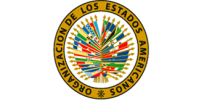Gender in Science Education
Gender parity in primary education has been achieved in most Latin American countries, while at the secondary level, many countries in the region show disparity in favour of females. Girls outnumber boys overall in secondary enrollments while female enrollment is greater than male enrollment in most Latin American countries at the tertiary level. However, the gender balance for science and technology remains in favour of males overall.
- At the primary level, even though girls and boys have the same access to coursework, they do not emerge with the same levels of understanding due to lack of life experiences and ability to participate actively in class (Malcom, 2010).
- Girls do not pursue science and technical studies at the same rate as boys, though there is variation by subject area and by country. Societal and parental attitudes toward boys’ and girls’ abilities play a role here, as does access to resources.
- Quality of teaching materials can be poor, and perceptions that girls are less able to “do” science, are expressed in teaching pedagogy and curricula. This tends to influence interest and self-confidence in ability to successfully “do” S&T on the part of girls and boys (UNESCO, 2007) but affects girls most profoundly.
- Girls and boys experience differential access to technical and vocational education – In the majority of countries worldwide, young men are more likely than young women to enroll in vocational education, and young men are more likely than young women to graduate from secondary level certification programmes (UNESCO 2010).
- How about the fraction of children who ever make it to secondary education in Latin America?
In the example of Chile, of those students who enrolled in secondary level technical streams, 82.2% of girls chose a commercial specialization, while 58.5% of boys (and 13.1% of girls) chose the industrial specialization (UNESCO, 2003). In the US, girls are earning high school credits in math and sciences at the same rate as boys, although they take advanced placement exams in STEM-related subjects at a lower rate than boys. At the same time girls are increasingly represented as high achievers in mathematics. Both boys and girls in minority groups, such as African-Americans and Hispanic students, have less access to advanced courses in mathematics and sciences in high school, affecting their representation in STEM related subjects at the tertiary level (AAUW, 2010). These numbers are echoed in other parts of the world.
Although some science courses at the tertiary level see 50% or higher female participation in the Americas, this trend is generally restricted to the biological and life sciences. Participation rates for females in other science and engineering courses remain substantially and consistently less than males throughout the Hemisphere. For example in Brazil, female representation in tertiary level biological, medical and life sciences was an astonishing 70% in 2009, while for engineering and physics, including computer sciences, it was a mere 21% (Abreu, 2011).
Further, despite promising numbers in some countries and in some disciplines at the first degree level, the global trend is for decreasing representation of women as one continues in the field. For example, in India women earned 32 per cent of all first-level degrees and 20 per cent of all third-level degrees in physics, but made up only 11 per cent of professionally-employed physicists (UNESCO, 2010). Data for the region show that some countries show gender parity in S&T research, although most countries show an imbalance in favour of males. For example, in Costa Rica female researchers make up 46.5% of researchers, and men make up 53.5%. In Chile, the percentages are 28% and 73% respectively. On the other hand, in Bolivia they are 67.5 and 32.5% (www.ricyt.org). Despite these inroads, textbooks used in schools still portray science and technology as male activities. Recent studies in the US show that when children are asked to draw a picture of a scientist, 61% will draw a picture of a (generally Caucasian) male (Schiebinger, 2010).
In its work to improve the level and the relevance of science education in the hemisphere, the IANAS Science Education programme will need to take into account these gender trends in science education and build on existing knowledge and tested strategies to address them.
References
- American Assocation of University Women (AAUW). (2010).
- “Why so Few? Women in Science, Technology, Engineering and Mathematics.” February. Washington: AAUW. Malcom, Shirley. (2010).
- “How to Reach Out to Girls, Their Families and Communities to Support Involvement in Inquiry-Based Science.” Inquiry Based Science Education (IBSE) for girls. 11-13 May, Pretoria, South Africa. ASSAf. Oliveira, Maria Coleta, Glaucia dos Santos Marcondes, Joice Melo Vieira, Rosário Aparicio. (2011).
- National Assessments on Gender and STI – Brazil. Women in Global Science and Technology (WISAT), Organization for Women in Science for the Developing World (OWSD). Schiebinger, Londa, Gender, Science and Technology. In: Background Paper prepared for the UN Expert Meeting on Gender, Science and Technology, September 28 – October 1, Paris. 2010. UNCTAD (2011).
- Applying a Gender Lens to Science, Technology and Innovation, Geneva. UNESCO (2003).
- Gender and Education for All: The Leap to Equality. Paris: UNESCO. UNESCO (2007).
- Science, Technology, and Gender: An International Report. Paris: UNESCO. UNESCO Institute for Statistics (UIS) (2010). Global Education Digest 2010. Montreal.













